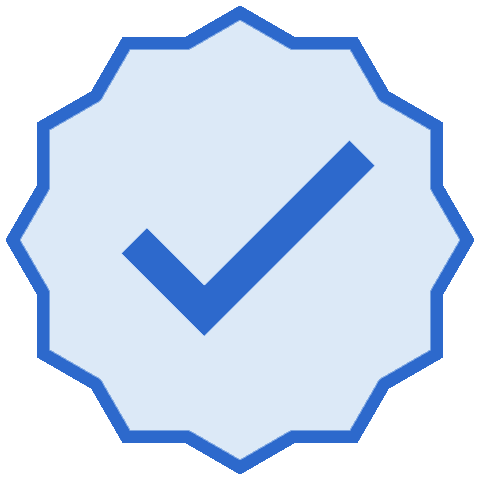Les 3 principaux points à prendre en compte dans l'élaboration d'un procédé de validation du nettoyage basée sur les risques
Le principal objectif des activités de validation du nettoyage dans l'industrie pharmaceutique consiste à protéger la sécurité des patients et la qualité des produits.

Le secteur adopte peu à peu des méthodes basées sur la science et les risques pour atteindre cet objectif au niveau du développement et de la validation du nettoyage. Même si les documents de référence sont nombreux, il n'est pas simple de rester au courant de toutes les directives et exigences réglementaires.
Cet article va présenter les principaux points à prendre en compte à l'heure de créer un programme de validation du nettoyage basé sur la science et sur les risques.
1. Suivre les consignes réglementaires en matière de conformité
Pour veiller à la conformité des opérations, il est nécessaire d'évaluer les risques pour différentes activités de validation du nettoyage. L'Annexe 15 plus particulièrement stipule que des évaluations des risques doivent être effectuées pour les activités suivantes :
- Justification des limites de nettoyage choisies
- Identification du nombre de cycles nécessaires pour démontrer la validation d'un procédé de nettoyage
- Détermination de la portée et de l'étendue de la qualification et de la validation
Quant au guide de l'ASTM E3106 - 18 pour le développement et la validation de procédés de nettoyage basés sur la science et sur les risques, il souligne que l'évaluation des risques doit être réalisée pour les activités suivantes de validation du nettoyage :
- Stratégies de regroupement
- Détermination des paramètres essentiels pour l'inspection visuelle
- Détermination des lieux de prélèvement des échantillons, du nombre d'échantillons, etc.
L'Annexe 15 de l'EMA précise clairement dans la section 1-7 que la façon dont l'évaluation des risques est utilisée pour justifier les activités de validation doit être précisément documentée. Les consignes Q9 de l'ICH constituent un excellent guide pour concevoir et exécuter une évaluation des risques. Ce document offre une approche systématique à la gestion des risques de qualité et propose de bonnes pratiques pour l'industrie pharmaceutique et son environnement réglementaire.
Des évaluations bien définies et faciles à suivre permettent de mieux se préparer aux audits.
2. Veiller à la cohérence et à la répétabilité de votre approche de l'évaluation des risques
Comme différentes évaluations des risques sont créées pour concentrer les efforts de validation et réduire l'empreinte, il est essentiel de respecter un procédé conforme et reproductible. En général, les entreprises utilisent des « solutions maison » avec des tableurs, des tableaux et des formulaires. Ces documents se présentent majoritairement sous format papier et sont remplis manuellement. Certaines sociétés préfèrent utiliser des logiciels de validation entièrement automatisés pour maintenir la cohérence et la reproductibilité des procédés d'évaluation des risques.
Prenons l'exemple du processus d'évaluation des risques liés à l'identification du pire cas pour un site de production pharmaceutique. Lors de l'introduction d'un nouveau produit, utiliser la « solution maison » obtenue lors de la validation du nettoyage de départ peut s'avérer difficile et peu adapté. L'ancienne évaluation doit être revue, et la logique, les justifications et les considérations faites au départ devront être étudiées et comprises. Il est possible que de nouvelles consignes réglementaires (p. ex., utiliser les valeurs de l'exposition quotidienne autorisée [PDE] au lieu de l'ancienne valeur LD50 ou de l'approche par dose thérapeutique) ou de nouvelles exigences liées au site doivent être mises en place. En plus de la confusion et de la quantité de travail requise, le risque de manquements mis à jour lors des inspections réglementaires augmente pour différentes raisons, allant des incohérences et mauvaises interprétations aux omissions.
Des évaluations bien définies et faciles à suivre permettent de mieux se préparer aux audits. Ceci est possible en aidant les inspecteurs à comprendre le raisonnement suivi par l'entreprise.
3. Gérer vos ressources en étant pratique
Bien maîtriser l'évaluation des risques permet de cibler et de comprendre clairement les considérations, les informations et les données techniques nécessaires à la bonne réalisation de l'évaluation. Vous gagnez ainsi du temps, car il n'est plus nécessaire de rechercher et d'étudier minutieusement tout un ensemble d'informations inutiles.
Cherchez-vous à concevoir un procédé de validation du nettoyage basée sur les risques ? Téléchargez notre checklist pour vous aider à voir où il peut y avoir des risques et où des améliorations peuvent être nécessaires, dans votre process.
1 EudraLex Volume 4; Lignes directrices de l'UE des bonnes pratiques de fabrication pour les médicaments à usage humain et vétérinaire, Annexe 15 : qualification et validation ; mars 2015
https://health.ec.europa.eu/system/files/2016-11/2015-10_annex15_0.pdf
(consulté pour la dernière fois le 26 janvier 2023)
2 Lignes directrices Q9 de l'ICH sur la gestion des risques relatifs à la qualité ; EMA/CHMP/ICH/24235/2006 Committee for Human Medicinal Products ; septembre 2015
https://www.ema.europa.eu/en/documents/scientific-guideline/international-conference-harmonisation-technical-requirements-registration-pharmaceuticals-human-use_en-3.pdf
(consulté pour la dernière fois le 26 janvier 2023)
3 ASTM International, 2018. Guide de l'ASTM E3106 - 18e1 pour le développement et la validation de procédés de nettoyage basés sur la science et sur les risques [Standard Guide for Science-Based and Risk-Based Cleaning Process Development and Validation]. ASTM E3106, West Conshohocken, Pennsylvanie.



